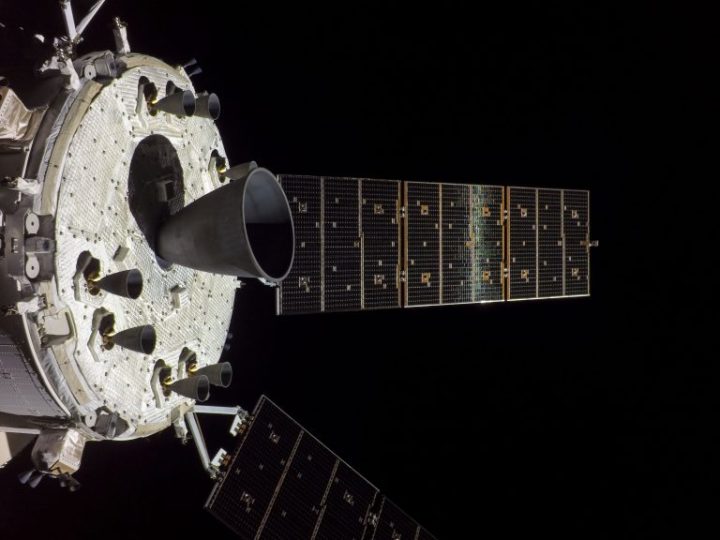NASA’s Orion spacecraft is on its way home from its orbit of the moon and is due to splash down in the Pacific Ocean tomorrow, Sunday, December 11. Teams on the ground are performing last-minute checks of all the required systems for tomorrow’s splash down, and the Orion craft has performed a series of final tests of its thrusters.
To control its re-entry into the atmosphere, Orion will use a set of engines called its crew module reaction control thruster system. These small thrusters control the direction and stabilization of the module which would be holding the human astronauts if this were a crewed flight. As this mission is uncrewed, its aim is to test whether astronauts can safely be transported. To test out these thrusters, teams fired each one in a quick burst of 75 milliseconds in what is called a hot fire test. By firing thrusters in pairs on opposite sides of the spacecraft, they could be tested with minimal disruption to Orion’s direction.

Orion is currently traveling at 2,100 mph, and it will need to slow itself to less than 20 mph when it enters the water. It will also need to pass through the Van Allen belts, which are areas around Earth where radiation is trapped due to the planet’s magnetosphere. These belts are what keep us on the surface safe from dangerous space radiation, but they can be hazardous to spacecraft.
Orion has been designed to withstand space radiation and has a “storm shelter” inside it where a crew could be kept safe from high levels of radiation caused by a solar particle event. In this uncrewed test, Orion has radiation experiments and sensors on board to check how much radiation a crew could expect to be exposed to throughout a journey to the moon and back. Other systems to test what the landing would be like for a crew include a mannequin placed in one of the seats, with sensors to detect vibrations and the forces of gravity.
NASA will be providing a livestream of the Orion splashdown, so head over to our guide on how to watch the splashdown at home.
Editors' Recommendations
- NASA’s Orion spacecraft has ‘critical issues’ with its heat shield, report finds
- Voyager 1 spacecraft is still alive and sending signals to Earth
- How to watch SpaceX Crew-7 return to Earth this week
- NASA video looks ahead to an exciting 2024
- Extraordinary footage shows Orion’s ride to Earth exactly a year ago



